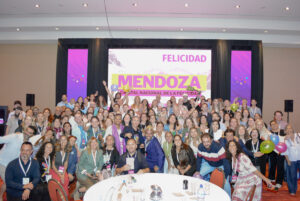
Introduction: The World Happiness Foundation’s 10 Billion Happy Vision by 2050
The World Happiness Foundation (WHF) has set a bold overarching

There’s no right way to feel. But what is important is to feel because we as human beings, feel first. We think of ourselves as thinkers, but really, we’re feeling creatures. So before I use these skills with people, I usually just have them check in and ask them on a scale of zero to ten, how strong is what you’re feeling? Because if we’re going to talk about shifting feelings, we want to first understand where we starting off with emotions are the spice of life. They are the things that color our lives.
So we’re going to start with number ten. And so ten is a skill called Havening. So this is when someone is feeling very stressed out. So Havening is a technique in which we apply three different types of touch. And what I love about Havening is you can do it to someone else, you can walk them through doing it to themselves, and you can use it for yourself as well.
If someone is really stressed out, they’re not going to be able to talk their way into calming down. Stroking the side of the arms is one of the moves within havening, the other is across the forehead, just forehead to temple and the other one you could actually do on the person’s palms. Of course, if you’re doing this with children, if you’re doing this with your own kids, of course ask for permission before you start to put your hands on anyone.
You can also facilitate people doing it to themselves. So I’d say go across your arms, across your shoulders, and begin to soothe yourself by going shoulder to elbow. One thing we’re not doing is rubbing up and down.
The other technique is at number 4. It’s the motion of down tapping. Tapping emotional freedom technique has started to become incredibly popular because one, it is highly effective. And two, it’s been getting a lot of research behind it, but it’s actually using two fingers and to tap first the back of the hands, then from the top back of your hands, you go to the top of your head, corner of your eye, outer edges of your eyes, bottom of your eyes, over your lip, over your chin, to the top of your, underneath your top of your chest, and then to the side of your ribs, right over where your broad line would be.
And there’s a lot of science behind why they suspect this is working in particular, that we have acupressure points at the tips of our fingers and specific Meridian points along the points of our body. And so scientists have been evaluating this compared to other interventions as a powerful psychosensory tool to shift how we feel in real time.
Watch all the emotional management techniques here.
You probably have a mindfulness app on your phone already. I’m going to profile a few. Of course, Headspace is the one you may have heard of. It’s one of the most popular. I think it’s the most popular app, and it’s really wonderful. It’s an incredible introduction to mindfulness.
This is the Waking Up app from Sam Harris, who’s taken a very interesting approach to create a course and feature teachers of all kinds in his program.
This is an app called Liberate, which is a mindfulness app that features teachers and content directly targeted at the bypass community. So black, Indigenous and people of color.
This is Bright Mind, which is a really wonderful targeted app based on the teachings of an American Zen teacher named Shinzen Young Wearables and Biofeedback.
So you may or may not have had some exposure to these, but we all know about our Fitbits and Apple watches. So this is Aura, which is a handy, dandy little ring that you wear on your finger. It’s really amazing how much technology they packed into this piece of hardware. The main focus of the app and the sensors is to track your sleeping, which is definitely a big part of well being and happiness. There’s also a mindfulness tool where you can track your heart rate and your feet per minute and your heart rate variability while you do meditation. So that feature, I believe, is called the Moment feature. Really interesting stuff.
Now let’s get into immersive experiences. So the oldest example of the immersive experience is probably the sensory deprivation tank. This is a wonderful piece of technology. Some of you may have tried it that actually just lets you float in saline water in complete darkness, sometimes listening to music and really kind of relax your sensory input and give you space to explore your mind.
In the more modern era, we’re starting to see VR applications aimed at meditation. And there’s some really interesting ones. For example, this is Guided Meditation VR, which basically guides you to these beautiful locales, for example, in Indonesia, and you’re wearing the kind of headset in a VR, and you’re listening to a guided meditation in a beautiful setting.
Next, we have another VR meditation. This is called Tripp. You can see these little particles coming at you. You see the most sparkles, and now they’re going out. And so it’s actually measuring your breathing and giving you this kind of, like, energetic visualization of your breathing along with guidance coming out of Achille Interactive.
There’s a lot of really cool technologies out there. I really wanted to encourage you to try them out and to shift your perspective on what technology can be in terms of happiness.
Watch all the technological tools for mindfulness here.
After a number of careers, I ended up in the wilderness of Southern Utah in the United States. And I was a wilderness guide, and we were taking young people out on extended wilderness journeys to help them kind of sort their lives out. About 80% of those who came to work with me and work with our company were there because of drug and alcohol problems. The program began to rapidly evolve into a treatment center, and we knew that meditation was essential. And I realized I wasn’t very good at meditation, and my students certainly were worse than me.
And so what we’re going to do about this? And that’s when I found this technology, brain and trainment technology. With many spiritual experiences, there are States that come and then they go. So that’s one of the challenges when we’re doing spiritual work is how to differentiate between just really groovy experiences, looking for something: deeper happiness, deeper joy and deeper fulfillment. With spiritual practice, we realize our true nature in the big sense, in a very lived and this is not just intellectual. Remember, in a very big sense. And then we come to understand what our mission and goal is as an individual human being born into a human body at this time.
The next is grow up. Let’s get to these higher levels of our personal development because at those higher levels of development, we begin to understand that everybody has a perspective. You can’t solve a problem on the level it was created.
Clean up your life, your diet, your food, physically. You can use all that stuff, right? Good fuel, and you’ll be a much happier person and much more effective in your life’s work and your relationships.
It is about service. Human beings need to get together and enjoy one another and enjoy life and bring our hearts together. But then we have to go back with our hearts and our hands open back into the world to deal with the issues that we are confronted with and to eliminate unnecessary and ignorant suffering. And when you’re coming from that place, when you have those four things pretty much established as part of an ongoing process because it is a journey, I think we will have new understandings and experiences of what soul centric, deep, non-dual human purpose and happiness are all about.
Watch John Dupuy’s complete ponente here.
I work closely to the transformative technologies and I’ve been accumulating experience around human behaviors and technology design. There is this pathway where people are using this direct path and there’s a sign saying “Please use sidewalk”. Now it’s a question: why is the sign not working? It’s an invisible social layer.
In this case, the question would be how many people have taken the direct route? And I usually ask people to guess and they usually say a few thousands. So my guess would be 10,000. Now, how many people were required or actually did the sign? People most often say one. So we are actually experiencing this social dynamic of one person against 10,000.
The way in which we deal with this game where we see one against 10,000 is actually put the green grass. Therefore it comes down to the very basics of how we operate, how we make decisions, and pretty much looking into our own human brains. So therefore summarizing three types of change.
Usually, when people are motivated by positive enforcement or rewards, you can achieve transactional change. But in reality, if you want to achieve transformation, we need to use something that works on our instinctive part of the brain, which is social influence from other people.
Therefore, if you look at the corners of the top of the slide on the left hand side, these are more artificial to our human being and to the right. This is more humane. But the thing is, if we have enough understanding of how we can change ourselves and others, the only thing we need to do is find the answers or find that transformational power in ourselves in our DNA and activate that transformation gene.
Watch Agnis Stibe complete presentation here.


The World Happiness Foundation (WHF) has set a bold overarching

Mendoza, Argentina – In the foothills of the Andes, thousands

The Nature of the Soul and the Divine Self At